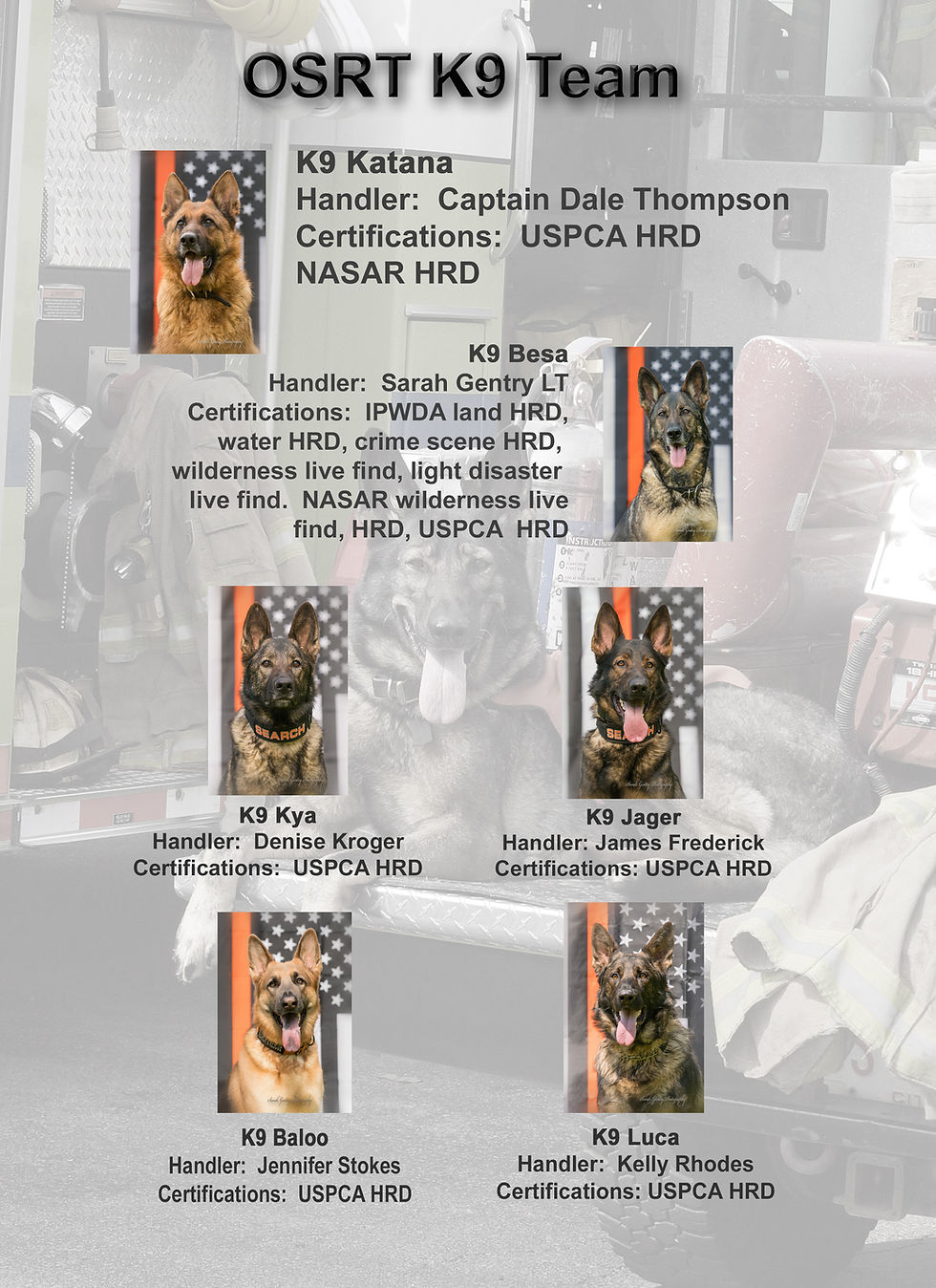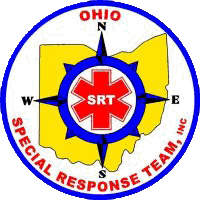Need a Search Dog? Not all K-9s are created equal...
- OSRT Information

- Mar 19, 2022
- 3 min read
Updated: Mar 21, 2022
Ohio Special Response Team - Search & Rescue K-9 Unit
“A search dog, is a search dog, is a search dog, right?”
Wrong...
Let’s begin at the beginning. According to the Ohio Attorney General’s “2019 Missing Children Clearinghouse” annual report, more than 18,000 missing children reports were initiated throughout the state. Law enforcement was, impressively, able to locate over 90% of these children by year’s end. But, in a majority of missing persons cases, time is critical to successful recovery and, frequently, police departments simply cannot do it all. In many cases they need more specialized assistance.
That’s where qualified search dogs can be brought into play. Note: we said “qualified”. Unfortunately, there are literally dozens of “not so qualified” K-9s showing up for field searches. These animals may or may not be capable but, if it was your child missing, and law enforcement needed additional assistance searching a large rural (or even urban) area, wouldn’t you want the most qualified K-9 search team possible to step up to the plate?
Some of the absolute critical elements – success factors – of any K-9 search for a missing person can be illuminated as a combination of the qualifications of the dog; the qualifications of the dog handler; the experience of both; and the support team they bring with them.
K-9 Search Dog Qualifications
When evaluating potential search K-9s, always ask to see their certifications – If the team is to be called upon on a regular basis, establish a mutual support agreement, maintain a file of the qualification documents (digitally, as well as on paper), and keep the file updated.
Following are the recognized credentialing bodies:
USPCA – United State Police Canine Association
NASAR – National Association for Search and Rescue
IPWDA – International Police Work Dog Association
Following are the recognized credential qualification categories:
Land Search
Water Search
Live Find Search
Wilderness Live Find Search
Light Disaster / Building Collapse Live Find Search
Crime Scene Human Remains Detection
Land Search Human Remains Detection
You may have heard of K-9 search dog skills sets as:
Air
Ground
Water
Electronics
These are fine as informal reference skills but are not, professionally speaking, recognized credentials. Always clearly document one or more of the seven formal credentials listed here along with details regarding each K-9 – including experience.
K-9 Handler Credentials
All too frequently, when K-9s are brought in to conduct a search, we tend to neglect to document the qualifications of the handler. Handlers should be qualified as well as their K-9s. Formal search theory, techniques, and experience are as critical as the ability to follow a dog around the incident geography.
Of nearly equal importance, a well-qualified K-9 search team will also bring skilled and experienced flankers into play during the incident. These personnel – also trained in formal search techniques – act in direct support of each handler. Their responsibilities are to maintain navigation and communications functionality. More critically, flankers are tasked with watching for, and documenting, any possible evidence, clues, or hazards encountered. This frees up the K-9 handler to focus 100% on the actions of their search dog.
Another hallmark of an effective K-9 search team is their ability to track and document their actual search. Merely having the K-9 jog through a search are does little to quantify the thorough nature of search efforts. The OSRT K-9s wear GPS-enabled collars that allow our Incident Commanders to precisely track where they've been. This simple step allows us to deploy qualified ground search personnel to supplement and enhance the K-9s efforts. As a direct result, area coverage is more comprehensive and the ability to qualify probability of detection improves dynamically.
All too frequently, when K-9s are brought in to conduct a search, we tend to neglect to document the qualifications of the handler. Handlers should be qualified and certified as well as their K-9s. Formal search theory, techniques, and experience are as critical as the ability to follow a dog around the incident. K-9 handlers should be trained and certified by one or more of the organizations credentialing the K-9 as well as one or more of the following specialized search & rescue organizations:
NASAR - National Association for Search and Rescue
MRA - Mountain Rescue Association
ASTM – American Standards Body
Does all this make a difference? Absolutely. Below is a graphic of 6 of the 9 search K-9s and handlers of the Ohio Special Response Search & Rescue Team. Qualified responders can make a major difference in search success.
Take a look at just a few of the credentialed K-9 Search experts participating in operations as members of the Ohio Special Response Search & Rescue Team.
























Comments